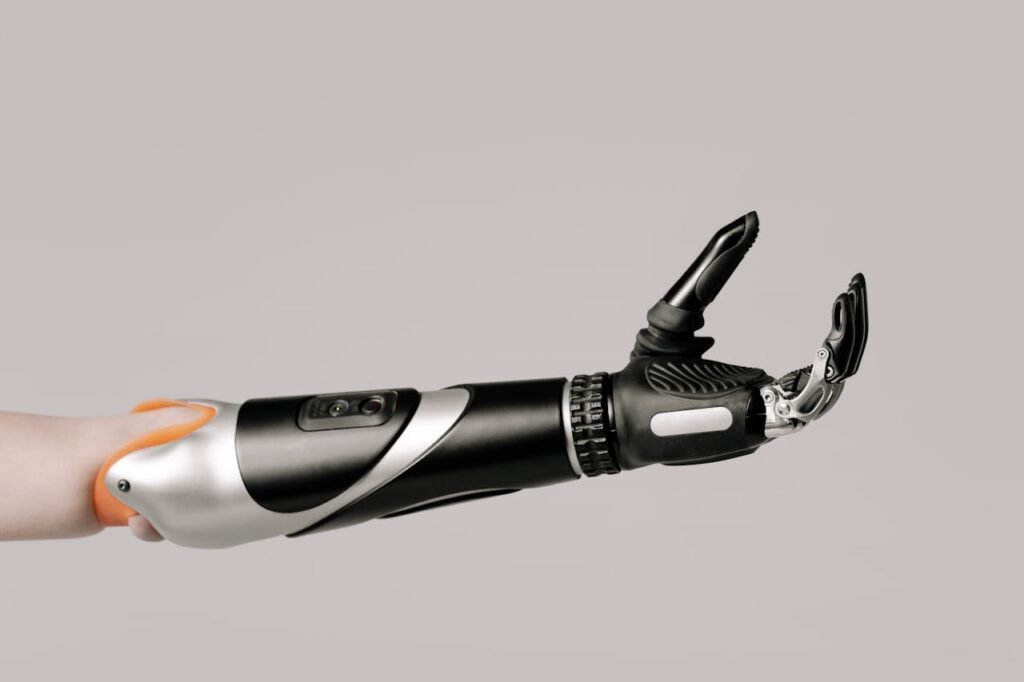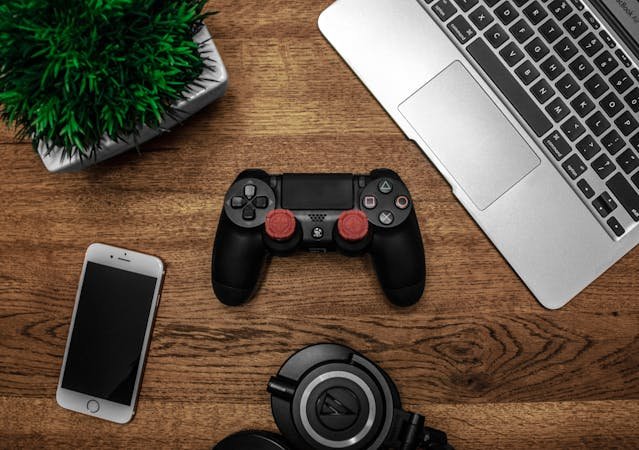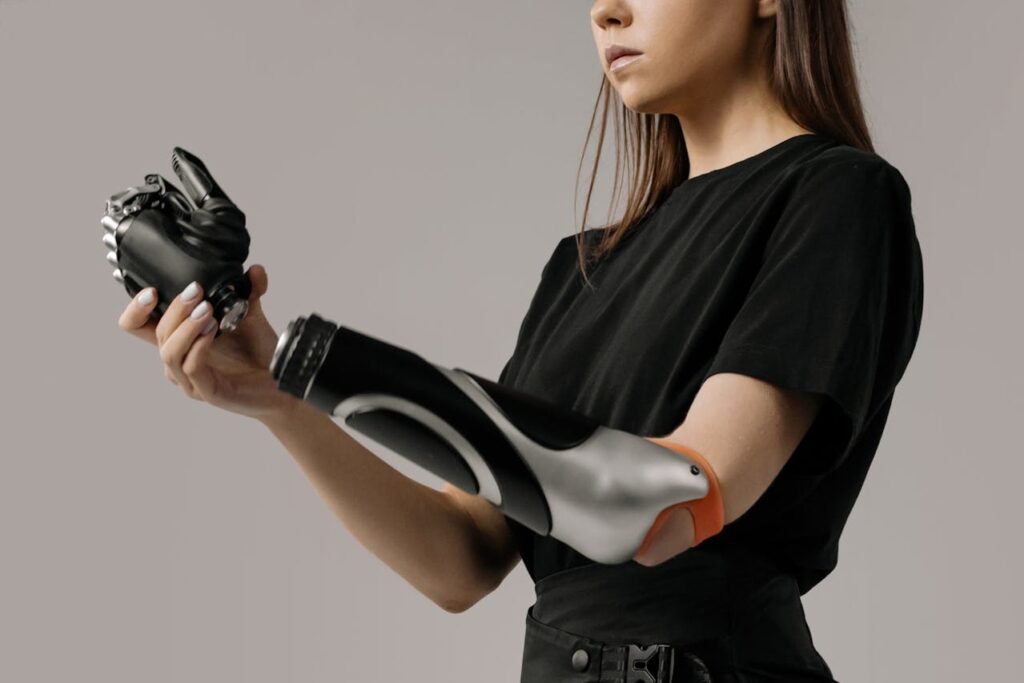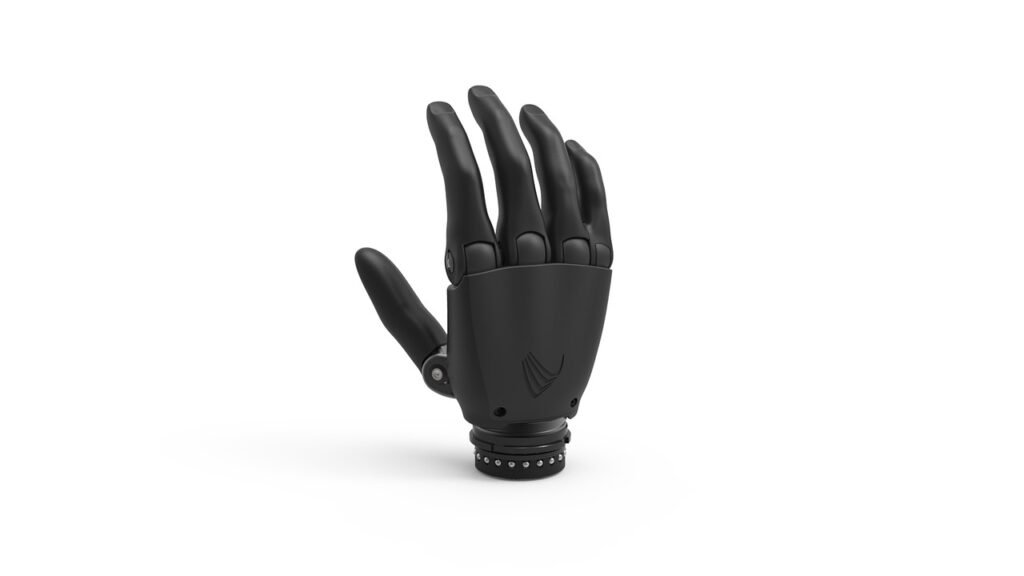For most people, daily life runs on small actions—stirring food in a pan, typing an email, or applying lipstick before stepping out. These moments feel ordinary, but they define how independent and confident we feel each day.
For women using bionic hands, these moments can sometimes feel uncertain at first. But with the right grip modes, technology turns that uncertainty into control, grace, and ease.
Modern bionic hands now offer more than just movement—they adapt to your habits. They understand pressure, angles, and tasks, helping you live naturally again. Whether you’re cooking dinner, working on your laptop, or doing your makeup, grip modes make every motion smoother and more personal.
This article explores how these different grip modes work, how to use them in daily activities, and how to get the most out of your bionic hand. It’s a guide designed especially for women who want to blend precision with comfort—turning every simple task into a moment of confidence.
Understanding Bionic Hand Grip Modes and How They Work
What Are Grip Modes in a Bionic Hand

A bionic hand works through a set of programmed grip modes—each designed for specific daily actions.
These modes allow you to move the fingers and thumb in patterns that mimic natural human motion. Some grips are firm, others are soft or precise, depending on the task you’re performing.
The purpose of these modes is not only to restore hand function but to give you choice. You can decide how your hand behaves depending on what you need to do, whether that’s holding a cup or typing on your phone.
The Science Behind Grip Patterns
Every bionic hand uses a combination of sensors, motors, and microprocessors to create grip modes.
The sensors pick up muscle signals from your forearm or residual limb, which are then converted into motion by the motors inside the hand. The software interprets these signals to activate the right grip.
It’s a balance between biology and technology—the more your muscles communicate, the more the prosthetic learns and adapts to your style of movement.
Over time, using it becomes intuitive. You don’t think about it as a device; it simply feels like a part of you.
Why Different Grip Modes Matter
Daily life isn’t one-size-fits-all. The way you hold a spoon is different from how you open a jar or apply eyeliner.
Different grip modes are what make a bionic hand versatile. They let you switch effortlessly from one activity to another without readjusting or straining.
Each mode ensures that your hand uses just the right amount of pressure and control, reducing fatigue and preventing accidents.
The Most Common Grip Types
While every brand has its own variations, most modern bionic hands include several standard grips.
There’s the power grip for firm holds, the pinch grip for precision, the tripod grip for balance, and the open-hand mode for rest. Some advanced versions even include custom gestures, letting you perform tasks more naturally.
Together, these modes recreate the range of motion needed for everyday living, from cooking meals to tying shoelaces.
How Bionic Hands Sense Movement
Sensors are the heart of any bionic hand.
They pick up tiny muscle contractions in your arm and use them to control the prosthetic. These sensors are extremely sensitive and can differentiate between signals for different types of grips.
Some newer models use pattern recognition, which means they can learn from your daily habits and predict which grip you need next.
This intelligent feedback system makes actions like stirring a pot or holding a pen smooth and lifelike.
Training Your Mind and Muscles
When you first start using a bionic hand, training is crucial.
Your body and brain need to learn how to communicate effectively with the prosthetic. During this phase, therapists teach you how to control muscle signals and adjust grip force.
At first, it might feel like learning a new skill—but soon it becomes second nature. The more you practice, the more natural every movement feels.
This phase also builds confidence, helping you trust your prosthetic fully.
Balancing Strength and Sensitivity
A great bionic hand doesn’t just offer power—it offers control.
Each grip mode is programmed to balance strength with sensitivity. You should be able to hold a delicate item like a flower without crushing it, and still have the power to lift a grocery bag.
This precision comes from the motors’ ability to adjust force dynamically, depending on feedback from sensors.
For women performing varied tasks—like handling glassware, typing, or applying makeup—this balance is what makes the prosthetic truly functional.
Adjusting to Your Lifestyle
Every woman’s lifestyle is unique. Some work in offices, others manage households, while many do both.
Modern bionic hands allow customization of grip modes based on your daily needs. You can fine-tune speed, strength, and motion through simple software adjustments.
This means your hand becomes more than a device—it becomes a personal assistant, adapted to your habits.
Maintenance and Calibration
Like any piece of advanced technology, a bionic hand needs regular calibration.
This ensures the grip modes stay accurate and responsive. The sensors and motors should be checked occasionally to make sure they’re aligned with your muscle patterns.
Your prosthetist can adjust the sensitivity if you notice the grips feeling too tight or too loose. Proper care keeps the hand reliable, smooth, and perfectly in sync with your movements.
The Emotional Side of Using Grip Modes
The impact of these grip modes goes beyond physical use.
They bring back the small freedoms—like holding a cup without fear, typing a message quickly, or applying lipstick confidently.
Each of these actions rebuilds independence and emotional stability, allowing you to live fully without second-guessing every motion.
Using Bionic Hand Grips for Cooking and Kitchen Tasks
Relearning the Joy of Cooking

Cooking is one of those activities that engages all senses. For women using bionic hands, it’s often a milestone in regaining independence.
With advanced grip modes, what once seemed difficult—chopping, stirring, holding utensils—becomes achievable again. It’s not just about preparing meals; it’s about restoring confidence and rhythm in your kitchen routine.
Each motion, from turning on the gas to serving food, can be made smoother with the right grip combination and a little practice.
The Power Grip for Holding Tools
The power grip is one of the most important modes for cooking.
It allows you to hold heavy objects securely—like pots, pans, or knives. When activated, the fingers and thumb close around the object firmly, distributing pressure evenly.
This grip gives stability when lifting or transferring items, such as when moving a hot pan from the stove to the counter. It’s also useful when holding larger utensils like ladles or spatulas while stirring food.
Women often describe this grip as feeling both strong and reassuring, especially when working with heavier cookware.
The Pinch Grip for Precision
Cooking often demands finesse—like picking up small ingredients, holding vegetables while peeling, or sprinkling spices.
That’s where the pinch grip comes in. It allows your thumb and index finger to meet delicately, mimicking the natural pinch motion.
This grip gives you the control to handle tiny items without crushing them. Whether you’re adding salt or placing coriander leaves on a dish, it helps restore the fine motor control that cooking often requires.
Mixing and Stirring with Control
Mixing batters, stirring curries, or tossing salads all rely on smooth, circular hand movements.
Bionic hands use adaptive grip modes that allow partial wrist rotation or flexible motion during such actions. You can adjust pressure while holding the spoon, ensuring you don’t drop or over-grip it.
Over time, you’ll notice how effortlessly your prosthetic adjusts to repetitive motion—making these tasks feel natural again.
For women who enjoy cooking daily, mastering this rhythm brings immense satisfaction and joy.
Holding and Cutting Vegetables
Cutting vegetables requires stability and coordination between both hands.
The power grip can hold the knife firmly, while the other hand (natural or prosthetic) stabilizes the vegetable on the board. Some users prefer switching the prosthetic to support mode, using it to hold vegetables steady instead of slicing.
This approach reduces pressure on your dominant arm and increases control. It may take practice at first, but soon, muscle memory takes over.
The result is safety and comfort in a task that once seemed intimidating.
Handling Hot or Fragile Items
Safety is crucial in any kitchen, and modern bionic hands come equipped with sensors that prevent excessive grip force.
This means you can hold delicate objects—like glass cups or plates—without breaking them. Similarly, when handling hot items, using a protective glove over your prosthetic ensures heat insulation.
It’s best to test grip strength slowly at first, especially with new utensils or cookware, until you get familiar with the hand’s feedback.
With experience, most women gain confidence quickly, learning to sense pressure just by feel and motion.
The Role of the Tripod Grip
The tripod grip uses the thumb, index, and middle finger to hold slim or rounded objects—like spoons, chopsticks, or pastry brushes.
It’s one of the most natural grips for delicate kitchen work. Whether you’re whisking, buttering toast, or arranging garnishes, this mode gives you a fine balance of precision and flexibility.
This grip is especially useful for women who enjoy baking, as it helps with mixing ingredients, holding pastry bags, and decorating desserts gracefully.
Washing and Cleaning Up
Kitchen work doesn’t end with cooking—it continues with cleaning.
Washing dishes or wiping surfaces can be easily managed with open-hand or relaxed grip modes. These allow a partial hold on sponges or cloths, so you can clean without overexerting your muscles.
Since most prosthetic hands are water-resistant to a degree, light splashes aren’t an issue. Still, it’s good to avoid prolonged water exposure or use protective coverings while washing large quantities.
The open-hand mode helps you hold wider items like plates, giving you firm contact without pressure.
Lifting and Serving Food
The lateral grip, where the thumb presses sideways against the fingers, is perfect for tasks like holding plates, serving trays, or flat items.
This mode gives your hand stability without needing a tight grip, which helps maintain balance while moving food from the counter to the table.
When serving, switching between power and lateral grips allows you to manage everything from cutlery to serving bowls efficiently.
It’s these small transitions that make your prosthetic feel like a natural extension of yourself.
Regaining Kitchen Confidence
Cooking is one of the most empowering activities after prosthetic adaptation.
It restores independence, reconnects you to familiar routines, and reminds you of your capability. Every new dish cooked, every meal served, becomes a small victory.
Over time, you’ll find your own preferred combinations of grip modes for specific recipes or habits. What once seemed like careful effort becomes instinctive flow.
Using Bionic Hand Grips for Typing and Digital Work
The Modern Need for Digital Dexterity

In today’s world, so much of our life depends on technology—writing emails, scrolling through phones, or attending online meetings.
For women using bionic hands, mastering typing and other digital interactions brings a huge sense of independence. It’s more than convenience; it’s about connecting with work, people, and passions effortlessly again.
Thanks to advanced grip modes and adaptive sensors, typing, texting, and even touch-screen use have become easier, smoother, and surprisingly natural.
The Precision Grip for Typing
Typing on a keyboard requires accuracy and rhythm, not force. The precision grip is perfect for this.
It allows controlled, delicate finger movement so each keypress feels intentional and balanced. Your bionic hand doesn’t need to strike hard; it just needs to follow your natural motion pattern.
Over time, your prosthetic learns the sensitivity you prefer, reducing accidental double-presses or missed keys.
This mode is ideal for professionals, students, and anyone who spends long hours working digitally.
The Tripod Grip for Holding Devices
Phones, tablets, and pens require stable yet gentle control. The tripod grip offers exactly that.
It uses the thumb, index, and middle fingers to create a secure hold while allowing fine movement. When you’re scrolling on a phone or signing a document, this grip provides the right amount of contact and mobility.
It also works well for stylus use on tablets—great for women in creative fields like design, architecture, or education.
The smoothness of this grip mode makes multitasking simple—you can transition from typing to holding your phone within seconds.
Adapting to Laptops and Keyboards
Bionic hands now feature adaptive typing modes that learn from your hand posture and preferred motion.
During setup, your prosthetist can program the grip angles so that your wrist rests naturally on the keyboard. This reduces strain and allows longer, more comfortable sessions.
For many women working in offices or remotely, this customization helps maintain productivity without fatigue.
Combined with the right ergonomic setup, typing with a bionic hand becomes as fluid as it once was with your natural hand.
Gesture Control and Smart Adaptation
Some advanced bionic hands offer gesture-based controls.
This means you can use small wrist or finger movements to trigger shortcuts—like switching grip modes, answering a call, or opening an app.
These smart features save time and reduce the need for manual adjustments. It’s especially useful when you’re working at a desk or moving between devices.
As you get used to these controls, your workflow becomes more efficient and intuitive.
Writing and Note-Taking
Whether you’re jotting down notes or signing documents, the precision and tripod grips again prove valuable.
You can adjust pressure through small muscle signals, allowing smooth pen strokes without pressing too hard.
This is particularly helpful for women in administrative or academic professions, where handwriting is still part of daily routines.
The balanced motion lets you maintain neat, steady writing with minimal strain, even over long periods.
Managing Touch Screens
Touch screens can be tricky, but bionic technology makes them manageable.
Some prosthetics include conductive silicone fingertips, allowing direct interaction with phones and tablets. Others rely on stylus tools for more precision.
You can customize sensitivity so that gentle contact is enough to register touches without accidental taps.
It takes a little practice to find your preferred pressure, but once set, using touch devices becomes effortless.
Switching Between Work Tasks
Modern grip systems allow seamless transition between different hand modes.
For example, you can move from a typing grip to a power grip to lift your laptop, then back to an open-hand mode for resting. These changes are smooth and require minimal thought.
Women who handle multiple tasks—typing, writing, using phones—find this fluidity empowering. It allows you to stay efficient without constant adjustments or fatigue.
Ergonomic Tips for Long Working Hours
While grip modes make typing and digital work easier, ergonomics still matter.
Keeping your desk height comfortable, resting your prosthetic when not in use, and ensuring proper wrist alignment all help prevent strain.
Most modern sockets are designed to distribute weight evenly, so you can work longer without discomfort.
Small breaks every hour can also help maintain circulation and relaxation for your muscles.
Emotional Ease in Professional Environments
For many women, returning to digital work after limb loss can feel emotionally daunting.
But once you master your prosthetic’s grip modes, those worries fade. You type, scroll, and communicate just like anyone else.
That realization—that your abilities haven’t been taken away, just redefined—is powerful. It rebuilds self-assurance in professional and social spaces alike.
Many users describe the first time they type a full paragraph or send a message independently as one of the most uplifting milestones in their recovery.
Using Bionic Hand Grips for Makeup and Personal Care
Redefining Everyday Confidence

Makeup and grooming are personal rituals for many women. They aren’t just about appearance—they’re about feeling ready, strong, and beautiful in your own skin.
For women using bionic hands, these routines may seem delicate at first. But modern grip modes have transformed them into something both simple and enjoyable again.
With a little patience and the right approach, you can blend foundation, apply eyeliner, or fix your hair with confidence. It’s not just about technique—it’s about rediscovering grace in your daily rhythm.
The Soft Grip for Makeup Brushes
The soft grip mode is ideal for holding slender items like brushes, pencils, or mascara wands.
It provides gentle control without applying too much pressure, allowing smooth, even strokes. Whether you’re brushing powder across your face or blending eyeshadow, the prosthetic mimics natural hand movement beautifully.
You can adjust the grip’s strength through muscle signals, ensuring it feels stable yet delicate. This precision prevents accidental slips and keeps your routine calm and comfortable.
Applying Foundation and Skincare
Foundation blending is all about rhythm and touch. The adaptive grip mode, which allows small, repetitive motions, works perfectly for this.
You can use a makeup sponge or brush, adjusting your wrist angle naturally as you move. Because bionic hands can hold items securely without over-squeezing, applying creams, lotions, or serums becomes easier too.
Many women find that after a few tries, they can complete their skincare and makeup routine in nearly the same time as before. The key is learning how to guide the prosthetic gently and trusting its feedback.
Using the Pinch Grip for Fine Tools
For delicate steps like applying eyeliner, holding tweezers, or managing small clips, the pinch grip is invaluable.
It lets you hold thin objects firmly while maintaining control over micro-movements. With practice, you can achieve the precision needed for tasks like shaping eyebrows or applying kajal without hesitation.
Start slowly—steadying your elbow against a surface can help at first. As muscle memory builds, you’ll move naturally, developing confidence in every small detail.
Hair Care Made Simple
Brushing, styling, or tying your hair requires coordination between hands. Modern bionic grips allow for flexible adjustments to hold combs, brushes, or hair ties easily.
The power grip works well for holding brushes, while the lateral grip helps in gripping clips or securing ponytails.
With practice, you can style your hair independently—whether you’re brushing it in the morning or getting ready for a night out. The prosthetic’s stable wrist control and grip feedback make movements smooth and predictable.
Managing Jewelry and Accessories
Jewelry often involves small, intricate movements—closing a clasp, adjusting earrings, or wearing bangles.
The tripod and pinch grips are particularly useful here. You can hold fine chains or small items securely without dropping them.
Some women find it easier to lay accessories on a flat surface before putting them on, allowing the prosthetic to approach them from the most stable angle.
With time, these little adjustments make accessorizing a natural, enjoyable part of your routine again.
Handling Makeup Containers
Many makeup containers—like compacts, lipsticks, or bottles—require twisting or flipping motions.
The lateral grip and precision grip together handle these perfectly. You can twist open a cap, lift a compact mirror, or hold a lipstick tube with ease.
Bionic hands also allow switching between grips quickly, so you can move from one product to another seamlessly. The key is slow, steady motion at first—once you’re familiar with the feedback, it becomes effortless.
Dressing with Ease
Personal care doesn’t stop with makeup—it extends to dressing up.
Zippers, buttons, and scarves all require different grips. The lateral grip helps pull zippers, while the pinch grip can manage buttons. For softer fabrics or saree pleats, the open-hand mode assists in holding and adjusting folds gently.
Women who wear jewelry or traditional attire often customize their grip strength slightly lower to handle delicate materials safely.
Over time, dressing becomes faster and smoother, giving back not just practicality but the pleasure of style.
Emotional Empowerment Through Routine
For many women, being able to do their own makeup or hair again is deeply emotional. It’s not about vanity—it’s about reclaiming a part of identity.
Every brush stroke or lipstick application is a statement of control and renewal. These moments build quiet confidence that carries into every other part of life.
The prosthetic becomes less about function and more about self-expression. Each grip mode helps translate your personal care routine into a reflection of your personality and independence.
Practical Tips for Learning Graceful Motion
When beginning to use your bionic hand for personal care, start with small, repetitive actions.
Practice gripping cylindrical items like pencils or brushes to understand pressure and angle. Use a mirror to watch your movements—visual feedback helps fine-tune your precision.
Avoid rushing. These routines are about familiarity and flow. Within a few weeks, your hand’s responses will align perfectly with your rhythm, allowing movements that feel almost instinctive.
The Beauty of Adaptation
Mastering grip modes for personal care isn’t just about skill—it’s about adapting with grace.
Every woman develops her own rhythm, technique, and comfort level. The best part of modern prosthetics is that they adapt with you.
They let you express your personality again—through your look, your gestures, and your confidence. That’s what makes technology human: it gives back more than it takes away.
Personalizing Grip Modes for an Effortless Lifestyle
Why Personalization Matters

No two women use their hands in exactly the same way. From the way you hold a cup to how you tie your hair, every gesture is uniquely yours.
That’s why modern bionic hands don’t follow a one-size-fits-all approach. Instead, they allow personalization—adjusting grip strength, motion angles, and even response speed—to match your habits and comfort.
The goal is simple: to make every action feel natural. When your prosthetic mirrors your rhythm, it stops feeling like an external device and starts becoming part of you.
Learning Your Grip Preferences
When you first begin using your bionic hand, you’ll notice that some grip modes feel more comfortable than others.
You might find the power grip more reliable for daily chores or the pinch grip perfect for fine detail work. Over time, you’ll understand which grips you use most often and how to transition between them smoothly.
Your prosthetist can help adjust the sensitivity of each grip mode based on your muscle strength and signal clarity.
This personalization makes your movements feel precise, effortless, and tailored to your daily life.
Setting Up Everyday Modes
Many bionic hands today allow you to pre-set “everyday modes.”
These are custom combinations of grip types for common tasks like cooking, dressing, or typing. For instance, you can set a light pinch for picking small items and a strong power grip for carrying bags—all activated by simple muscle commands.
These quick-access settings save time and reduce effort. They let your prosthetic anticipate your needs, so you move from one activity to another without constant reprogramming.
Fine-Tuning Force and Speed
Sometimes, it’s not about which grip you use but how you use it.
You might prefer slower finger closure when handling fragile items or faster motion when gripping tools. Functional software allows precise tuning for both force and speed.
Women who work in creative fields, like art or design, often fine-tune grips for smoother transitions between soft and firm actions.
This customization ensures that your prosthetic feels like an intelligent extension of your will—quick when needed, gentle when required.
Balancing Grip Stability and Flexibility
Everyday activities demand both stability and flexibility.
If your prosthetic grips too tightly, it may strain delicate items; if too loose, it may drop objects. Personalization helps you find that perfect middle ground.
During training, your prosthetist will guide you through trial sessions—adjusting how your hand opens, closes, and responds.
This gradual calibration makes all the difference between control that feels mechanical and motion that feels organic.
Creating a Routine That Works for You
Adaptation happens fastest when you make bionic use part of your routine.
Start with a set of activities you do daily—holding your phone, preparing tea, or typing messages. As you repeat these tasks, your muscles learn how to send consistent signals to the prosthetic.
Soon, switching grip modes will feel as automatic as moving your natural hand. You’ll stop thinking about how to do something and simply do it.
Adapting to Indian Lifestyles
Indian lifestyles involve a mix of traditional and modern tasks—cooking, dressing, commuting, and professional work.
That’s why personalization should include cultural habits too. For instance, adjusting grip modes for holding utensils, folding sarees, or applying mehendi can make your prosthetic blend seamlessly into your lifestyle.
These small but thoughtful adjustments help ensure your hand fits your world—not the other way around.
Switching Between Work and Leisure
Life isn’t made up of just one type of activity. You might work on a laptop during the day and cook or exercise in the evening.
Your prosthetic can be programmed to handle this variation with ease. Functional grip modes can change from active control to relaxed mode with a simple gesture or sensor trigger.
This flexibility keeps you comfortable while ensuring efficiency, whether you’re in a meeting or in your kitchen.
The Role of Ongoing Support
Personalization doesn’t end after the initial fitting.
As your comfort level improves, your prosthetist can fine-tune your bionic hand even further. Regular checkups help recalibrate grip modes, maintain responsiveness, and ensure that your prosthetic evolves with you.
Women often find that after a few months of daily use, their prosthetic feels more intuitive and aligned with their natural pace.
Continued care ensures that feeling never fades.
Emotional Confidence and Self-Expression
The more you personalize your bionic hand, the more it reflects who you are.
You’re not just adjusting grip strength—you’re shaping how you express yourself. The way you hold a cup of tea, wave to a friend, or brush your hair becomes an extension of your identity.
Technology enables motion, but confidence brings it to life. As you grow comfortable with your prosthetic, it becomes less of a medical device and more of a personal statement of resilience.
The Future of Grip Modes
Bionic technology is evolving rapidly, and the future of grip modes promises even more freedom.
Newer models will use artificial intelligence to automatically recognize activities and switch grips without any command. They’ll adapt to temperature, texture, and even fatigue levels for a more organic response.
For women, this means even greater ease and elegance—technology that understands their routine without needing constant adjustment.
These developments are making prosthetics more human, closing the gap between artificial and natural motion.
Robobionics’ Approach to Personalization
At Robobionics, personalization is at the heart of every prosthetic we create.
We believe that technology should fit into your life—not the other way around. That’s why we focus on understanding your habits, preferences, and goals before we design your bionic hand.
Our fitting process includes grip analysis, motion training, and emotional readiness support. We ensure that your prosthetic feels uniquely yours—balanced, responsive, and natural.
Whether you want strength for daily chores or softness for makeup and writing, we customize every detail for your comfort.
Living Effortlessly Every Day
The best prosthetic isn’t the one that looks most advanced—it’s the one that feels effortless.
When your bionic hand fits your life perfectly, you stop noticing it. You cook, type, apply makeup, and live fully, without hesitation.
Grip modes help create this effortless flow—turning every motion into something simple, graceful, and human.
At that moment, you realize your prosthetic isn’t a symbol of limitation—it’s a tool of liberation. It helps you do everything you love, exactly the way you want to.



